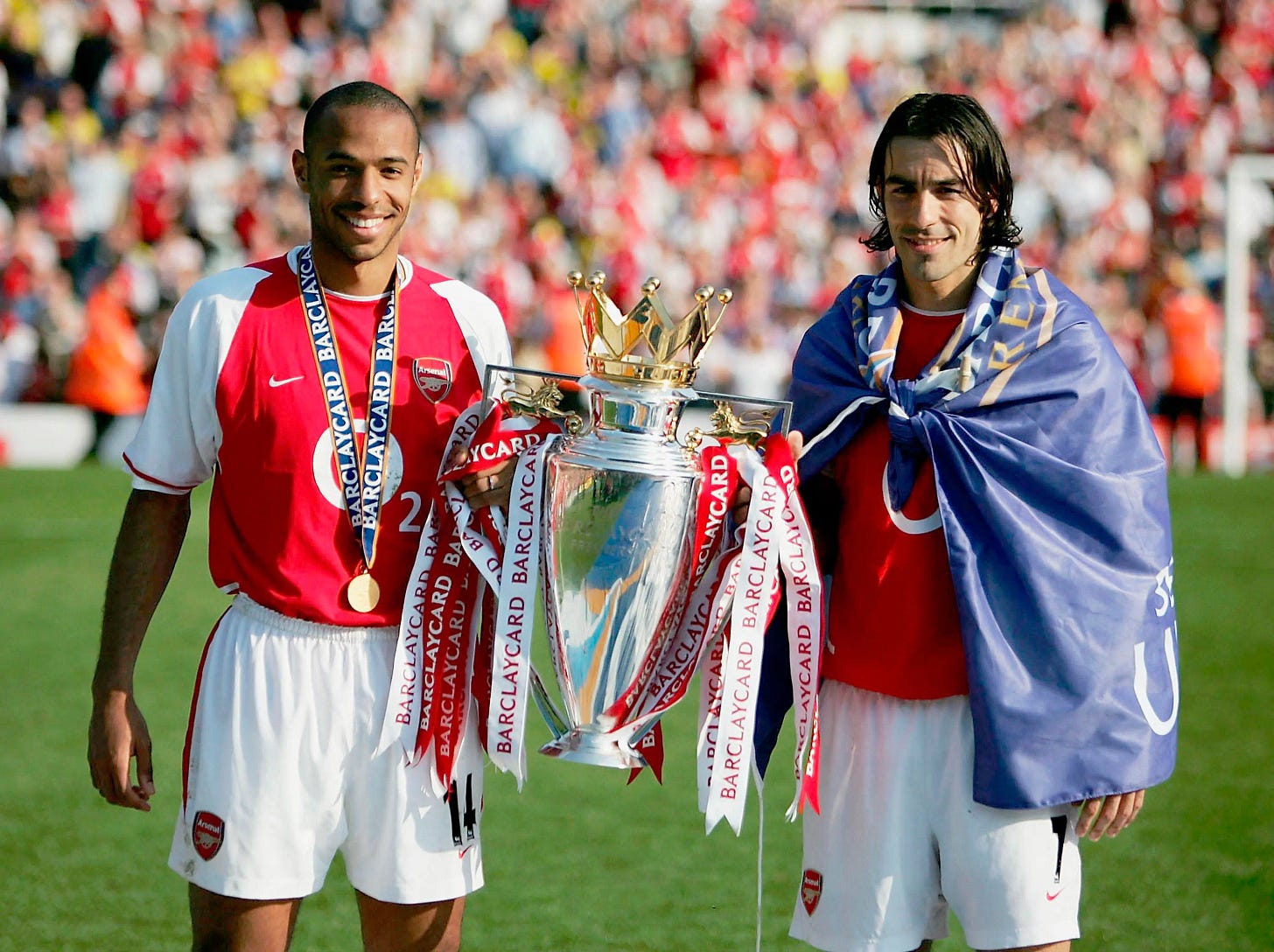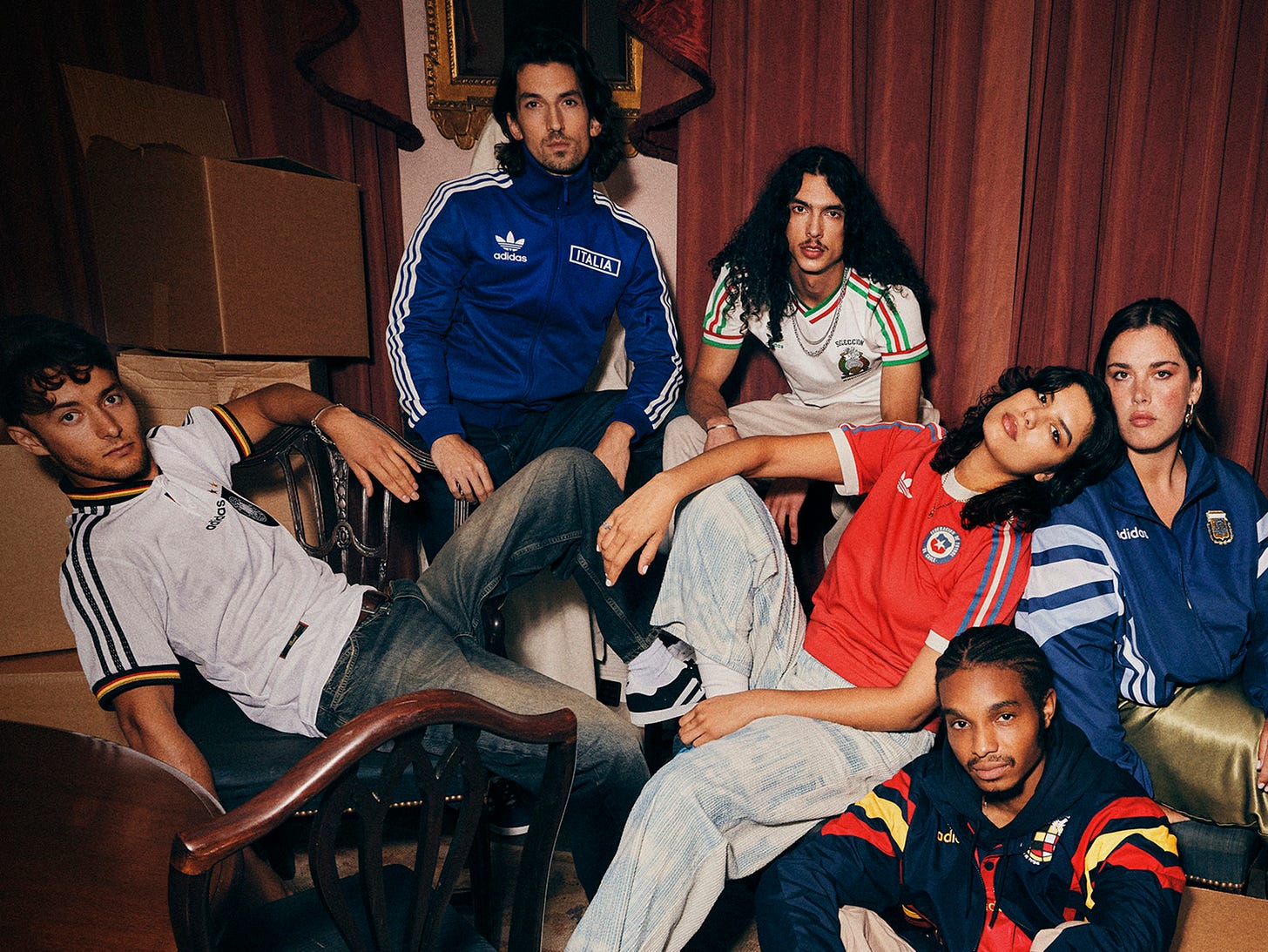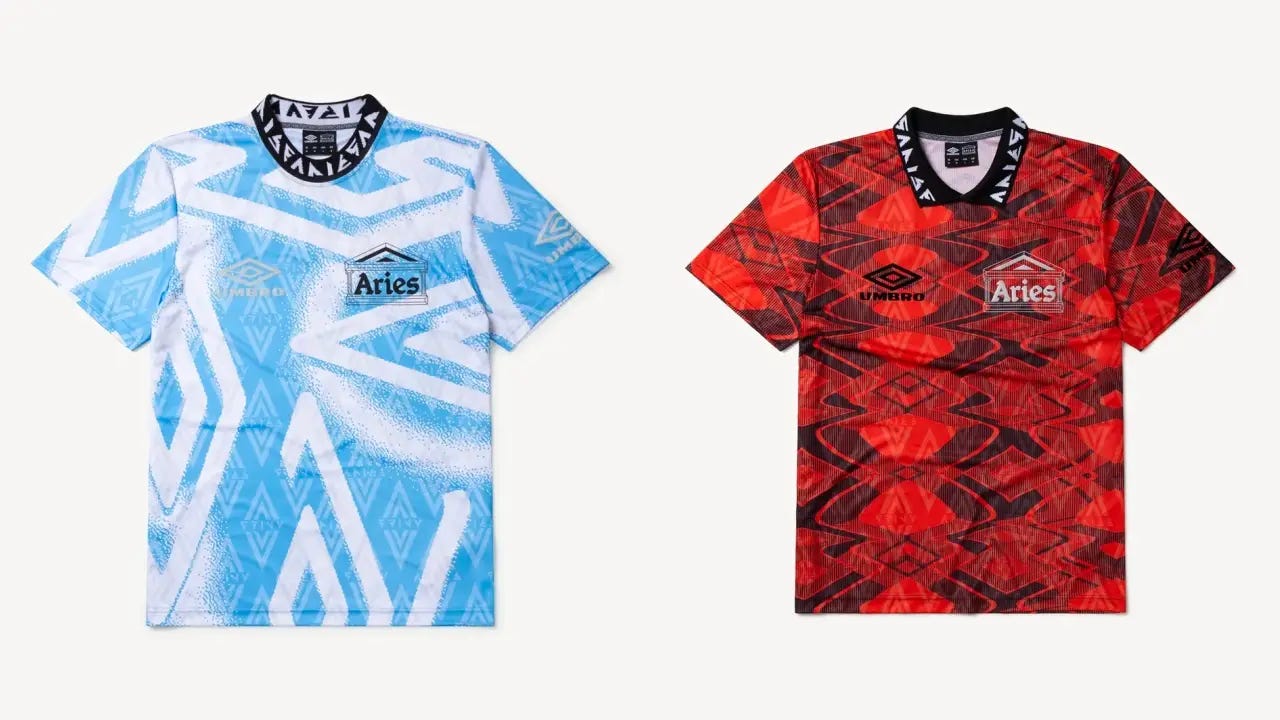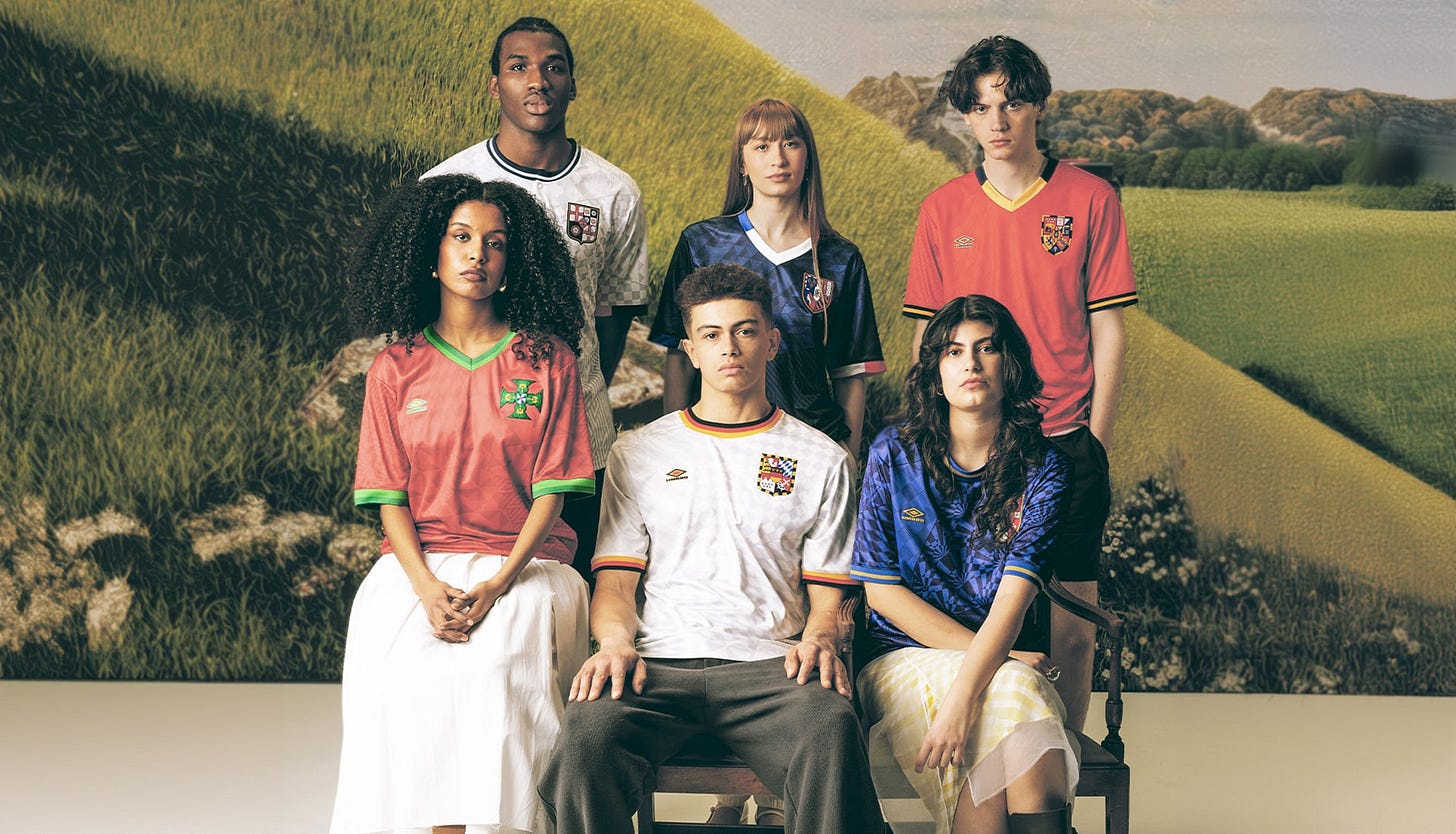Nostalgia's Role in Football's Fashion Wins
Nostalgia sells. We examine its role in football's continued fashion crossover success.
Football’s trailblaze through fashion has established the sport, particularly its top-flight clubs, as key players in the New Luxury economy.
While collaborations have thus far been one of the biggest drivers in levelling this cross-cultural relationship through consumer and market channel diversification, football clubs, kit, merchandise, and boot manufacturers are dialling into one of fashion’s most successful marketing tools; nostalgia.
It’s no secret that nostalgia sells. Fashion’s 90s obsession has dominated its seasonal landscape for several years; an obsession that’s since transitioned into a fixation on the anti-style trends of the early 2000s, seeing to the resurrection of low-rise jeans and Ed Hardy, while propelling football and basketball jerseys firmly back into the fashion zeitgeist.
The opportunity to relive decades past with rose-tinted lenses is a fundamental trend driver in fashion; through its cross-pollination into the New Luxury landscape, football is following suit, proving the power of nostalgia in further defining football’s success in fashion.
To build a picture of nostalgia’s role in football’s continued success in fashion, we examine the following:
Secondary market success
Brand loyalty
Retro collections
Nostalgia marketing
Celebrating heritage
Secondary market success
The writing has been on the wall for a long time on use cases for nostalgia in football merchandising. Commemorative kit reissues and retros have been an infrequent yet desirable aspect of football clubs’ merchandising; given their infrequency, secondary markets have dominated such sales.
Through storefronts like Classic Football Shirts and Cult Kits, vintage shirts, particularly during the statement style era of the 90s, have been a big market driver. Despite the demonstrated success of nostalgia across secondary market channels, clubs have been reluctant to make vintage kits part of their seasonal merchandising strategy.
Although exceptions exist; Arsenal and Liverpool F.C. have both successfully released retro kit and lifestyle collections to high fan demand; begging the question, why aren’t more Premier League and top-flight European clubs doing the same?
While forward momentum at club level remains slow, sporting brands with storied histories – including Nike, adidas, and Umbro – in the sport have lent in fully, capitalising on nostalgia’s selling power to secure new sponsorship deals and launch fast-selling apparel collections.
Brand loyalty
In football history, from World Cup wins to nail-biting Champions League finals, the kit manufacturer logos that sit parallel to club emblems are held in fond memory by fans; Umbro, for example, will always be remembered as the producer of the 1966 World Cup kit, most famous kit in the England national teams history.
Iconic kits, either by design or as a part of a historic moment, are remembered for who made them as much as who wore them. This emotional attachment begets deep-rooted fan loyalty; a proven marketing tool in business between manufacturers and clubs.
Arsenal’s return to adidas after a 25-year hiatus under Nike sparked palpable excitement among fans, who saw it as a sign that the team would be returning to its golden era of kit design; the same era that has formed the foundation of its recent retro collections.
Despite the Nike Swoosh being the emblem associated with the team’s last Premier League title 21 years ago, the celebrated adidas kits of the 80s and 90s have maintained enormous selling power and fan loyalty.
These sentiments also ring true for Liverpool F.C. as its five-year contract with Nike draws to a close, with reports that an adidas deal is already on the table. This has sparked massive anticipation amongst fans and sports media pages, speculating which iconic Three Stripes kits should be remade if the deal comes to fruition.
In contrast to these celebrated deals, the German national team’s transition to Nike sponsorship after 77 years under adidas elicited huge criticism from the German government and football fans alike; in this case, nostalgia lost out, with reactions emphasising the power of its emotional pull.
Retro collections
Putting the ever-changing hands of kit deals aside, sporting manufacturers have demonstrated enormous success in releasing nostalgia-led retro-themed collections, with Umbro and adidas leaders in the space.
Earlier this year, adidas released its national team retro kit collection, spotlighting ten teams’ mid-80s to late-90s jerseys. The collection was exceptionally well received, with stock appearing across a plethora of New Luxury e-commerce platforms, and selling out in a majority of sizes on adidas’ site.
This success was then replicated with the relaunch of Manchester United’s classic 1988 jersey, taken as a canvas for a collaboration with Manchester-based streetwear brand Drama Call, which would go on to fetch upwards of £400 on resale platforms. adidas’ successes, shared at commercial and corporate levels, demonstrate nostalgia’s seemingly innate ability to strike gold through fashion.
Nostalgic marketing
Football’s nostalgia pull has also demonstrated success in New Luxury through Corteiz, which tapped into the iconic early 2000s Nike Tiempo R10 commercial for its Air Max 95 collaboration.
This marketing strategy was so successful, in fact, that adidas quickly followed suit when it relaunched its fan-beloved Predator boots, complete with a Jude Bellingham-centric advert that followed the same formula that made early 2000s football ads so memorable.
Celebrating heritage
While brands like Nike continue to lag in the nostalgia race, adidas’ successes are relatively new; its retro strategy has only been put into place and executed at its current level for a few years; Umbro, on the other hand, as one of the longest-standing sportswear manufacturers in football, is years ahead of its counterparts.
With its finger on football’s pulse for 100 years, the British brand understands the sport, particularly its kit and merchandising golden eras, better than most. This unique perception has allowed it to utilise nostalgia hyper-effectively within its fashion endeavours, partially throughout the past decade.
Umbro has kept itself closely aligned with football’s intensifying fashion crossover, setting the tone and scale of countless collaborations through its work with Palace and Japanese label SEDAN, with both streetwear imprints pulling on the thread of Umbro’s iconic 90s archive.
Having been one of the most prominent sportswear brands in football for several generations, Umbro is one of the most memorable amongst fans, lending itself to countless moments across countries, at both club and national level.
Its unmistakable patterned jerseys are etched into footballing history, so much so that they’ve become one of the most desirable collaborative canvases for cross-cultural New Luxury brands like Slam Jam, Boiler Room, Percival, New Order, PATTA, Pretty Green, and ARIES, to name a few.
Most recently, Umbro tapped into bubbling Euros fever, launching the first part of its retro-themed Euros collection,. Once again featuring patterns synonymous with its highly-favoured 90s archive, most of the collection sold out instantly, which has been an expectation with Umbro’s nostalgic releases.
Football’s New Luxury transition through its ever-intensifying relationship with the fashion industry will, naturally, continue to see fashion’s proven commercial tenants take shape within the sport.
As an emotionally-rooted marketing strategy, nostalgia will be crucial in its future acceleration. While innovation will be the driving force that unlocks the full potential of football as fashion; understanding, respecting, and celebrating its past upholds its legacy; in sport, nothing sells more than legacy.










